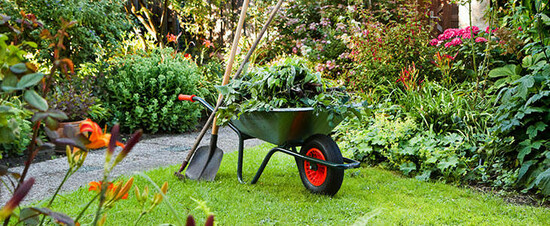Lawn care in the spring is a guarantee of a great season outdoors. You can't wait to take out the garden furniture to enjoy the hugs of the first rays of the sun. Even if you do not doubt that your lawn will be perfect, adequate care is necessary, mistakes are made. You need to know which ones to avoid during spring lawn maintenance.
Lawn care in the spring is a guarantee of a great season outdoors
One of the requirements for having a lovely lawn in front of the house is to eliminate the moss by following a few basic principles. With this process completed, your green carpet will be cleaned, and you will realize the measures to follow to ensure that the problem does not reoccur.
When it comes to spring lawn maintenance, some homeowners cause more harm than they realise. Try not to make a few mistakes when preparing the garden for the summer, so you don't have to overdo it.
Maintaining the lawn properly in the spring means not stepping on it too early. Most people find this tough, and how can one avoid it after such a long winter and several consecutive confinements? While it may be tempting to rush right into a spring routine, it's best to give the grass some time to recover. After the thaw, wait until the earth has dried out a little. Otherwise, you will harm not only the lawn but yourself too.
If your soil is already dry and very compact, aeration is important. An aeration roller punches holes in the ground allowing moisture and oxygen to enter and make the grass healthier.
It's a double-edged sword not to dethatch during fall lawn maintenance. Perhaps you haven't composted the dead leaves, and this mixture of plant stuff is sitting between the greenery and the soil. The "green needles" begin to penetrate as the snow melts. Then you notice light brownish spots in and around the grass. This organic material cannot decompose as quickly as it is produced, resulting in the formation of thatch. This thin layer is crucial for a variety of reasons, one of which is that it helps protect lawns against winter damage. As a result, many homeowners choose to let the thatch decompose naturally.
On the other hand, they don't realize that a thick layer of thatch can smother the yard or incubate insects and disease-ridden organisms.
Do not rush to fertilise
Well, you lawn lovers know that the purpose of fertilizer is to help your grass grow green, thick, and healthy. Before the fertilizer is applied in the yard, you want the grass to have woken up from the dormant season and greened up a bit. This happens at different times, depending on the region. If you fertilize earlier, you may be wasting fertilizer or worse, stimulating weeds to grow faster than the grass itself.
When it's time to fertilize, it's important to apply the right amount, too much and too little can affect the appearance of your lawn. Be sure to read the instructions on the label of the fertilizer you buy and apply them correctly. Before you start, it's important to have a general idea of the size of your lawn.
In the spring, it is very important to remember that soil temperature is what brings the lawn out of dormancy, not the application of fertilizer. Be careful not to over-fertilize.
Leaving things to the last minute is not part of good spring lawn care. Just like everything in life, proper lawn care usually comes down to preparation. While waiting for the weather to improve, you can take advantage of a last "turn of the screw": examine the mower which will be greatly exploited and review the tools in the garden shed.
By inspecting your mower, you can see damaged parts and fix them before the summer season: install a new spark plug, change the oil, empty the gas tank and remove dull blades to sharpen them. Sharp mower blades make a clean cut from the top of the plant, while dull blades can rip, shred and bruise grass tips, weakening grass vitality. This type of injury can also be a place where disease infects the plant. Having the motor and rotation checked is also essential to protect your lawn. If the rotation turns too slowly, it will cause injury to the leaves when mowing.
Take your mower to a small engine repair shop or your local hardware store for the necessary assistance.
Mowing too short can weaken the lawn
In spring and summer, healthy grass grows fast! It may seem tempting to mow your lawn short to reduce the frequency of mowing. However, it can impact the health and appearance of your lawn. The best grass mowing height is around 3 inches. It is recommended to mow only one-third of the lawn the first time. If you mow the entire area, the grass will lose its resistance to environmental problems such as disease, surface-feeding insects, and even the invasion of broadleaf weeds.
Sowing in the spring is not a good idea
Spring seeding often leads to undesirable results for the owner. Factors to consider are that there are many active weeds to compete with the new seed and their control cannot be applied to the areas you have seeded. Plus, the most stressful time of year for your cool-season lawn is fast approaching: the summer heat.
In the spring, many broadleaf weeds are actively developing, and any new grass seeds you scatter will be immediately fighting for germination space with them.


Comments
There are no comments yet. Login or Register and write an article comment